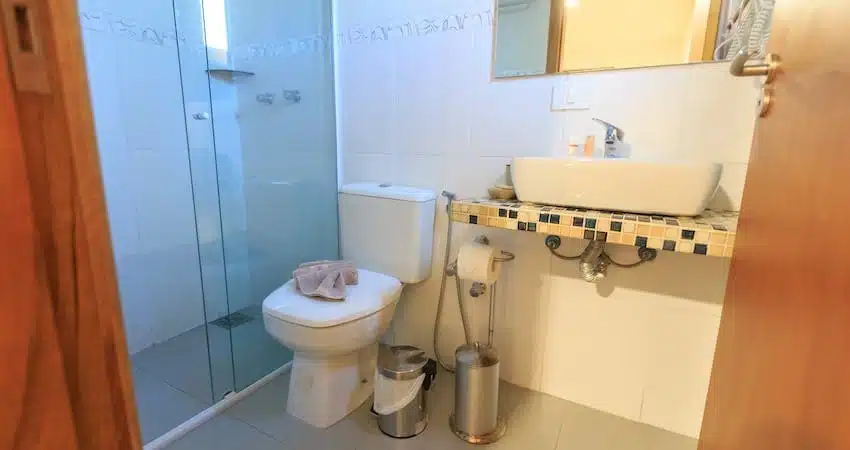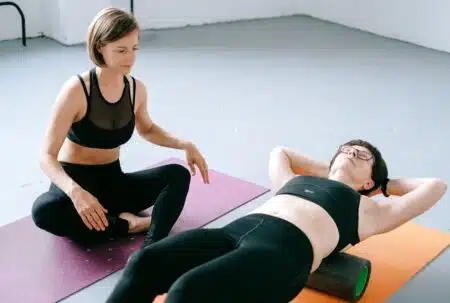Let’s face it – nobody enjoys struggling with lackluster bowel movements. Yet far too many people endure frustrating symptoms like infrequent, incomplete passages, excessive straining or outright constipation impairing comfort and wellbeing. Often simple adjustments in positioning when using the facilities can get things flowing regularly again without dependence on laxatives or other drastic measures. This occurs by optimizing anatomy to work synergistically with natural biofeedback cues. Understanding exactly how posture impacts digestion and waste elimination empowers taking control over this most basic bodily process.
Defining Healthy Bowel Movements
Bowel movements describe the elimination of waste from your intestinal tract out the anus. Normal bowel movements feature soft, formed stool passed without significant straining. Ideal frequency ranges from three times daily to three times weekly, as regularity depends more on individual natural rhythm.
Altered bowel movements manifest in changed stool consistency, difficult passage requiring prolonged pushing or pain, and radical shifts in number of daily movements. Constipation classically reduces frequency with hard, pellet-like stools, while diarrhea causes loose, watery stools passed more often.
The Squat Advantage for Bowel Movements
Consider how infants and toddlers often squat down during their first potty training efforts. Young children intuitively adopt this posture because it naturally aligns the body for easier bowel emptying. Squatting opens the anorectal angle – the curvature where the rectum meets the anus. This straightens the pathway, allowing gravity to assist stool descent.
Simultaneously, the squat posture relaxes muscles of the pelvic floor relaxing the anal sphincters. With the outlet relaxed open and rectal angle straightened, defecation can proceed freely. This explains why cultures using squat toilets report easier, faster bowel movements with less straining required.
Ergonomic Toilet Posture Enables Effortless Bowel Movements
Who wants to balance in a full squat on top of a Western-style toilet seat? Luckily, simple modifications to conventional toilet posture can replicate squatting’s advantages by:
- Straightening the anorectal angle
- Relaxing pelvic floor muscles
- Aligning the body for gravity’s assistance
Tips for ideal bowel movement positioning:
- Use a foot stool raising knees above hips
- Lean forward with elbows resting on knees
- Visualize pelvic floor muscles relaxing as you inhale
- Practice blowing out air as if through a straw to initiate stool descent
- Avoid breath holding and straining
This posture keeps the anus and rectum aligned for smoother waste elimination. Leaning forward engages abdominal muscles to gently assist evacuation. Deep breathing with visualization unwinds tension in pelvic floor and sphincter muscles.
Routine Regularity Through Posture and Lifestyle
Establishing a daily bowel movement routine trains the body’s natural elimination rhythm. Schedule time each morning when first awaking to capitalize on gastrocolic reflex stimulation. Relax toilet posture, breathe deeply, and give your body 10 minutes to respond before finishing.
Daily exercise, a fiber-rich diet, and optimal hydration nourish regularity. But avoid straining or sitting too long, as pushing hard or enduring pain may weaken pelvic floor muscles. If constipation persists despite posture and lifestyle adjustments, consult your doctor to address causes.
The Gastrointestinal Journey to Bowel Movements
Tracing digestion illustrates gut coordination culminating in complete bowel movements. After swallowing, food travels down the esophagus into the stomach. There acids and enzymes begin breaking components down into a semi-liquid mass called chyme.
The chyme gradually passes through the small intestine where key nutrients get absorbed into the bloodstream. Remaining indigestible matter proceeds into the large intestine, especially the colon. Slow rhythmic contractions called peristalsis mix and compact the waste, reabsorbing water to form more solid stool.
In the last 5-6 inch rectum section, stool accumulates until a mass enters the anal canal, triggering the defecation reflex. Once initiated, coordinated pelvic floor relaxation permits waste to exit via the anus. Optimizing posture facilitates this entire sequence for seamless bowel emptying.
Common Bowel Movement Difficulties and Solutions
Beyond suboptimal toileting posture, a variety of factors can disrupt normal bowel movements and contribute to problems like constipation. Identifying and addressing these root causes restores more effortless waste elimination:
- Stress and Anxiety – Manifest physically as tightened pelvic floor muscles. Practice relaxation techniques while toileting.
- Weak Pelvic Floor – Prolonged straining can overstretch muscles. See a pelvic floor physical therapist.
- Rectal Hyposensitivity – Diminished rectal sensation delays urge to defecate. Use biofeedback training.
- Dyssynergic Defecation – Pelvic floor fails to coordinate relaxing during defecation. Train proper muscle release.
- Diet Low in Fiber/Fluids – Encourage more fruits, vegetables and whole grains. Increase water.
- Medications Side Effects – Some drugs like iron supplements or opioids cause constipation. Discuss options with your pharmacist.
When Bowel Movements Bring Pain
Difficulty passing stool often progresses to painful defecation and bowel movements accompanied by bleeding. This warrants prompt medical evaluation to identify causes like:
- Anal Fissures – Tears in anal lining from strained bowel movements or hard stools. Topical nitrates or botox injections can help relax and heal tissues.
- Hemorrhoids – Swollen veins inside the anal canal caused by excess pressure from constipation, straining, diarrhea or pregnancy. Fix diet consistency, avoid straining, and treat with topical creams.
- Pelvic Floor Dysfunction – Spasms or poor coordination interferes with rectal emptying. Physical therapy restores control and coordination.
Use Proper Posture to Preempt Bowel Problems
Positional changes during toilet use cost nothing yet yield huge dividends in bowel comfort and completeness. Take pressure off strained pelvic floor muscles by optimizing posture. Relax rather than push while gravity empties your rectum with legs raised to mirror natural squat alignment.
When nature calls, listen by breathing deeply while sitting forward to send waste on its way with ease. Your pelvic floor and GI system will thank you after just a few sessions of this simple, posture-driven approach to healthier bowel function.



